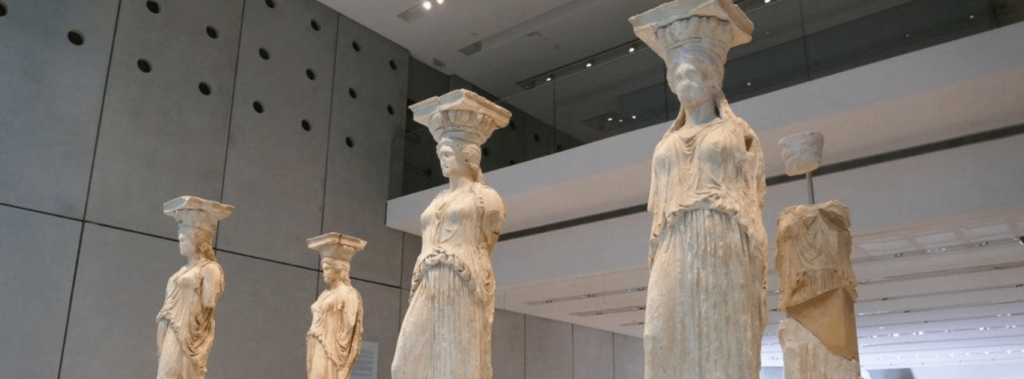
25 Ago 5 Architectural Icons From Ancient Greece
Ancient Greek architecture is an endless source of inspiration and references: the fascinating history, the evolving techniques, the ideas around proportion and materials, the mystic details and the sacred aura that reaches it all… Even though the topic is inexhaustible, we chose five iconic buildings that we find particularly appealing in architecture terms.
Temple of Apollo at Delphi
This temple was first built around the 7th c. B.C. by Throphonios and Agamedes, two legendary Greek architects. It endured several destructive periods and was rebuilt and restored several times. The version we now know dates back to the 4th c. B.C., though it preserved similar proportions and size to the previous ones. Its foundations can be visited today with a number of Doric columns made of limestone and porous stone. The interiors are poorly known, but the bits we do know are certainly worth admiring.


Temple of Hera at Olympia
This is the oldest temple at Olympia and one of the most important ones in ancient Greece. It used to be a temple for both Hera and Zeus originally. It’s the best preserved structure in Olympia, and probably dates back to the sixth c. B.C. It is six Doric columns wide and sixteen columns long, which were originally made of wood and were gradually replaced with stone. There’s a record of a sacred image of Hera that used to occupy the building, and archaeologists found a limestone head that is believed to be part of it. There was also a stone statue of Hermes carrying Dionysus which was found in the temple and is now showcased at the Archaeological Museum at Olympia.

Sanctuary of Asklepios at Epidaurus
This sanctuary dedicated to Asklepius, the god of medicine, is historically fascinating since it used to be a sacred place for medical practice that dates as back as the second millennium B.C. It is considered by many people as the place where modern medicine was born. The holy men at the sanctuary used herbs and came up with several techniques that turned the sacred rituals into scientific methods. Many things that were discovered in this site turned into founding rocks for modern medicine. Visitors can see the foundations of the hospital and the theatre, which hosts a diverse program of artistic performances for visitors.


Temple of Aphaea at Aegina
This temple is the only known site of worship for Aphaia. It dates back to the fifth c. B.C. and it played a key role in the foundation of the Doric Order of Greek architecture. During the building process, innovative construction techniques for the time, such as the pulley, started to be applied. The columns feature fascinating differences among them that can help us read the context in which they were created and the architectural evolution of the time.


Caryatids at the Old Temple of Athena Polias
The term Caryatid refers to architectural columns shaped like female figures. The most famous ones are found at the Old Temple of Athena Polias. These Caryatids feature characteristics that became pretty important for Classical sculpture, like the clothes that cling to the body and the position of hips and legs. They are all dressed the same, but each one is unique, there’s even the belief that different artists carved them. The columns that visitors can see today are replicas, however, five of the original ones can be admired at the Acropolis Museum of Athens and another one at the British Museum in London.


To get to fully know Ancient Greek history through architecture is a long and fascinating journey. Hopefully, this sneak peek will ignite your curiosity towards this never-ending universe, to which we owe a great part of the knowledge we apply to our buildings today. YOU MUST READ A Surrealistic Gem Hidden in Mexico
- Scully, Vincent, The Earth, the Temple and the Gods, San Antonio, Texas, 2013: Triny University Press
- Doxiadis, C. A., Architectural Space in Ancient Greece, Cambridge: The Massachusetts Institute of Technology, 1972.
- Wescoat, Bonna. D. Robert. G. Ousterhout, Robert. G., Architecture of the Sacred: Space, Ritual, and Experience from Classical Greece to Byzantiumi, New York, 2012: Cambridge University Press



No Comments